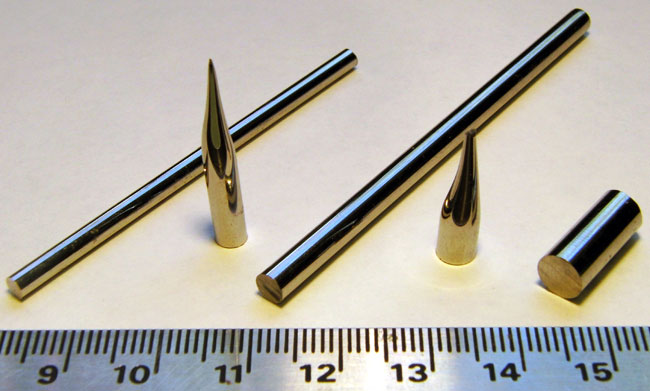New Metallic Glass Is Hard and Tough

A new member of the metallic glass family may rival Scotty's transparent aluminum in “Star Trek” for its mix of amazing properties. This palladium and silver alloy developed by Caltech researchers is both stronger and tougher than any titanium alloys. "Strength and toughness are actually very different, almost mutually exclusive," lead researcher Marios Demetriou said in a statement. "Generally, materials that are tough are also weak; those that are strong are brittle." The toughness of this new metallic glass, made from the rare metal palladium and small amounts of other metals, “does not come at the expense of strength," Demetriou said. "This material has both strength and toughness, which is why it falls so far outside what's previously been possible." Metals typically take on an ordered, crystal-like atomic structure. Inherent defects in this formation make metal shatter-resistant. The downside: Metals are relatively weak and malleable. By contrast, glass has an un-ordered structure, with smaller defects, which gives it greater strength (it doesn't deform). But once a crack starts propagating, it's unstoppable and can cause the entire structure to shatter. The Caltech group manipulated their metals to make the molecules take on the un-ordered structure of glass, giving them glass's hardness while retaining the optical and electronic properties of palladium, a white, opaque metal. The resulting material is as strong as the strongest steel alloy and as tough as the toughest steel alloy. The result is a palladium alloy that straddles a line that other metallic glasses have yet to reach. "Our study demonstrates for the first time that this class of materials, the metallic glasses, has the capacity to become the toughest and strongest ever known," Demetriou said. Demetriou suggests this material could be used to make harder and stronger dental implants (which are already made with palladium alloys). Though it would be "prohibitively expensive" for use in large-scale manufacturing of automotive and aerospace components, they are currently searching for comparable alloys of copper and iron, which would be cheaper. The new material was described online Jan. 9 in the journal Nature Materials.
Get the world’s most fascinating discoveries delivered straight to your inbox.
Jennifer Welsh is a Connecticut-based science writer and editor and a regular contributor to Live Science. She also has several years of bench work in cancer research and anti-viral drug discovery under her belt. She has previously written for Science News, VerywellHealth, The Scientist, Discover Magazine, WIRED Science, and Business Insider.

